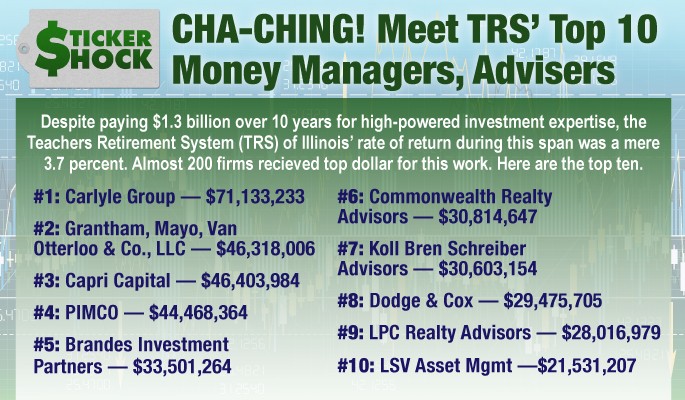Sticker shock Your investment fees are more than you think
Post on: 24 Апрель, 2015 No Comment

When investors come to FutureAdvisor. an online financial advisor that offers a free fee-evaluation service, their biggest surprise is not how much they’re paying in fees—it’s that they’re paying fees at all.
Despite decades of work by regulators pushing greater disclosure of fees on mutual funds, most investors remain blissfully unaware that they are paying hundreds, if not more than $1,000, in investment fees each year.
People think because there’s not a number, like the one above the button on Amazon.com, that they’re not paying anything, said FutureAdvisor CEO Bo Lu. Just because it’s not above the button doesn’t mean you’re not paying it.
A typical American fund-holding household, with $120,000 in mutual fund assets, paid $873 annually in ongoing fees for its mutual funds in 2012, the latest year available, based on an analysis by Lipper.
That doesn’t include sales charges or other fees, which could amount to several hundred dollars more a year. Front- and back-end commissions and fees can each be as high as 4.75 percent and 5 percent, respectively, Lu said.
The average ongoing fees paid by the typical household have dropped since 2000, but that is mostly due to the adoption of passive index-based funds. The fees paid by investors in actively managed mutual funds dropped slightly between 2000 and 2012, falling from .99 percent basis points to .82 percent, according to Lipper. A different analysis of fees on actively managed funds published by Princeton University economist and Wealthfront chief investment officer Burt Malkiel last spring showed that fees on actively managed mutual funds rose by about one-third between 1980 and 2010, to .90 percent from .66 percent.
Don’t fall into the trap of thinking the dollars are small because the percentages are, and don’t count on a fund company, financial advisor or broker to be up front with you about fees, said Barbara Roper, head of investor protection for the Consumer Federation of America, pointing out that investors usually receive their prospectuses after they buy.
If you want people to focus on fees, you would provide that information before they buy and in a form that they can easily understand. That’s not done, Roper said.
So how do you cut your fees?
• Comparison shop . Just as you might buy a washing machine from a discount store, one way to consider your fees is to consider whether you can get the same service for a cheaper price. For instance, in 2012 active and passive investors earned almost the same: 14.42 percent for investors in passive funds, on an asset-weighted basis, and 13.10 percent for investors in active funds. But the Lipper analysis showed that active investors paid $985 for their returns, and the passive investors paid only $216—less than a quarter of the price.
• Don’t think you’re special . You may not see the fees you’re being charged show up as a line item on your quarterly or annual statements, but that doesn’t mean they’re not there. The fees included in your expense ratio are taken right off the top of your returns before they’re even reported to you. Other fees aren’t included in your expense ratio; they fall under the category of commissions or under no category at all. Those fees are often deducted in the few days between the time you send the fund company your money and the time it shows up in your account. When people see that their account is a few hundred dollars less than their deposit, they assume it’s market movement, Lu said.

• Ask which fees you’re being charged and when they are being applied. If you have a financial advisor, he or she should be able to tell you. In addition to the expense ratio and commissions, you should ask about transaction fees, redemption fees (for when you cash out the fund) and other fees, such as fees for research, legal transfers, custodial fees and fiduciary fees—or even a purchase fee, separate from your sales commission or load. Tip: Ask which fees are included in your annual expense ratio and which are not.
(Read more: Don’t fall for these retirement scams)
Also find out if your fund charges 12b-1 fees, which are marketing fees charged by the fund to the client and then paid out to the advisor or broker who sells the fund. The SEC imposes no limits on the size of those marketing fees.
You could, of course, read your prospectus, where you’d find the fees mentioned, too. But the dense document written in legalese is often hard to weed through. The design of a prospectus is perfectly matched to the desire of someone to read it, said Charles Ellis, the author of Winning the Loser’s Game and an investor advocate who is an advisor to low-fee online advisors, including Rebalance IRA and Wealthfront, both based in Palo Alto, Calif.
The bottom line: Do your homework.
—By Elizabeth MacBride, Special to CNBC.com














